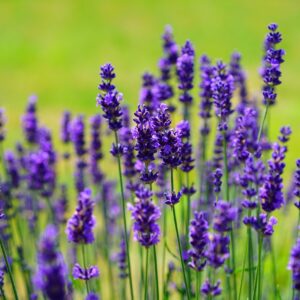Are you interested in growing your own plants from cuttings and seeds? Look no further! This guide will provide you with all the necessary information and techniques to successfully propagate plants.
By using the right tools and following the proper methods, you can easily create new plants that are identical to the parent plant. Whether you want to expand your garden or simply enjoy the satisfaction of nurturing new life, propagation is a rewarding process that anyone can master.
In this article, we will walk you through the steps of:
- Choosing the right tools
- Understanding the best time to propagate
- Taking cuttings and preparing seeds
- Providing optimal growing conditions
- Caring for and transplanting new plants
Get ready to embark on a journey of growth and discovery as you learn the secrets of propagation!
Choosing the Right Tools and Techniques
When it comes to propagating plants, it’s crucial to choose the right tools and techniques that will give your green babies the best start in life.
The first step is to gather the necessary tools, such as a sharp pair of pruning shears, a clean and sterile knife or razor blade, rooting hormone, and a clean container for your cuttings or seeds. Sharp tools will ensure clean cuts, promoting faster and healthier growth.
Next, you need to familiarize yourself with the different propagation techniques, such as stem cuttings, leaf cuttings, division, and seed propagation. Each technique requires specific tools and methods, so it’s important to choose the right one for the plant you want to propagate.
By using the proper tools and techniques, you’ll increase your chances of success and enjoy the satisfaction of watching your plants thrive.
Understanding the Best Time to Propagate
To ensure successful propagation, it’s important for you to know the optimal timing for starting new plants. Timing plays a crucial role in the success of your propagation endeavors.
Different plants have different preferences when it comes to timing, so it’s essential to understand the best time to propagate each species. Generally, the ideal time to propagate plants from cuttings is during their active growth period, which is typically in the spring or early summer. This is when plants are actively producing new growth and have a higher chance of successfully rooting.
On the other hand, propagating plants from seeds requires a bit more research. Some seeds need a period of cold stratification, while others prefer warm temperatures. Understanding the specific needs of each plant will greatly increase your chances of successful propagation.
Taking Cuttings and Preparing Seeds
Taking cuttings and preparing seeds is an exciting journey that allows you to witness the miracle of life unfolding right before your eyes. When it comes to taking cuttings, it’s important to choose healthy, disease-free plants as your source material. Look for strong stems and vibrant leaves, as these’ll have a higher chance of success.
To take a cutting, use a sharp, sterile tool to make a clean cut just below a node or leaf joint. Remove any lower leaves and dip the cut end in rooting hormone before placing it in a well-draining potting mix.
As for seeds, it’s crucial to choose high-quality, fresh seeds. Sow them in a seed tray filled with a moist, sterile growing medium, making sure to follow the recommended sowing depth and spacing. Keep the tray in a warm and well-lit area, and water regularly to ensure proper germination.
With patience and care, you’ll soon see new life emerging from your cuttings and seeds.
Providing Optimal Growing Conditions
Create the perfect environment for your plants to thrive and witness their growth flourish before your very eyes. When providing optimal growing conditions, it’s important to consider factors such as light, temperature, humidity, and soil quality.
Place your plants in a location that receives the right amount of sunlight, as different plants have different light requirements.
Monitor the temperature and keep it within the ideal range for your specific plants.
Maintaining proper humidity levels is crucial, especially for delicate seedlings. Use a spray bottle to mist the plants regularly or place them in a humidity dome.
Lastly, ensure that your plants have well-draining soil that’s rich in nutrients. Regularly check the soil moisture and water accordingly.
By creating these ideal conditions, you’ll give your plants the best chance to grow and thrive.
Caring for and Transplanting New Plants
Caring for and transplanting new plants is an exciting adventure that allows you to witness the growth and development of your green companions.
Once your cuttings or seeds have successfully rooted and reached a suitable size, it’s time to nurture them and prepare them for transplanting. Make sure to provide them with adequate water and sunlight, but be careful not to overwater or expose them to direct sunlight for extended periods.
Monitor the soil moisture levels regularly and adjust watering accordingly. When it comes to transplanting, choose a location that matches the plant’s sunlight and water requirements. Dig a hole slightly larger than the root ball and gently place the plant into it. Fill the hole with soil, firmly but not too tightly, and water thoroughly to help settle the roots.

Finally, keep a close eye on the new plants, providing them with the care they need to thrive and grow into beautiful additions to your garden.
Conclusion
Congratulations! You now have all the knowledge and tools you need to successfully propagate your plants. Remember, choose the right tools and techniques, understand the best time to propagate, and take cuttings or prepare seeds carefully.
Provide optimal growing conditions and give your new plants the care they need. Before you know it, you’ll have a beautiful garden filled with plants that you’ve grown yourself. Happy propagating!





